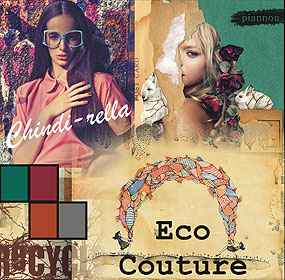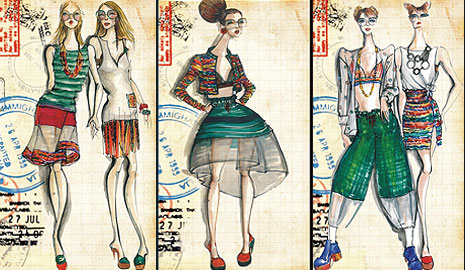 Fashion comes with its downsides and one of them is the enormous textile waste in the form of household dumps and post industrial wastes causing environmental concerns like water pollution and clogging of water bodies.
Fashion comes with its downsides and one of them is the enormous textile waste in the form of household dumps and post industrial wastes causing environmental concerns like water pollution and clogging of water bodies.
Moreover, this waste as chemically treated and dyed releases harmful toxins in the water. Also, the fragments of these fabrics are consumed by fishes and thus damage the aquatic ecology. So taking up this cause creatively young designer Aniket Satam crafted an eco- conscious collection Chindi – rella (chindi is a colloquial term for strips of fabric wastes) using the textile waste to make the beautiful garments.
Designer accentuates that the simple innovation and stylish appreciation of basic craft can translate the trash into treasure. He believes that if the beauty lies in the eyes of beholders and each one of us have eyes for details, we can all excavate the utility in the useless. A simple knit can un-knot many environmental issues.

Aniket used these fabric cuttings tastefully in generating innovative textile. By employing traditional methods of macramé, crochet and knitting, the strips of fabrics have been turned into textural patterned bases. Crafty methods which are used making rugs and doormats have been employed artistically and exquisite recycled fabric crafted, which is unique and can be customized (never can be repeated) on consumers demand.
The prime importance in the process is the selection of right color story which would not make it look trashy but thoughtful and also results into elimination of dying process and conserve a lot of water.
Braiding and cording of such materials result in various trimmings for surface enhancements. Hooks, safety pins, assorted buttons and recycles plastic bottle chips are used for texturizing the base.








